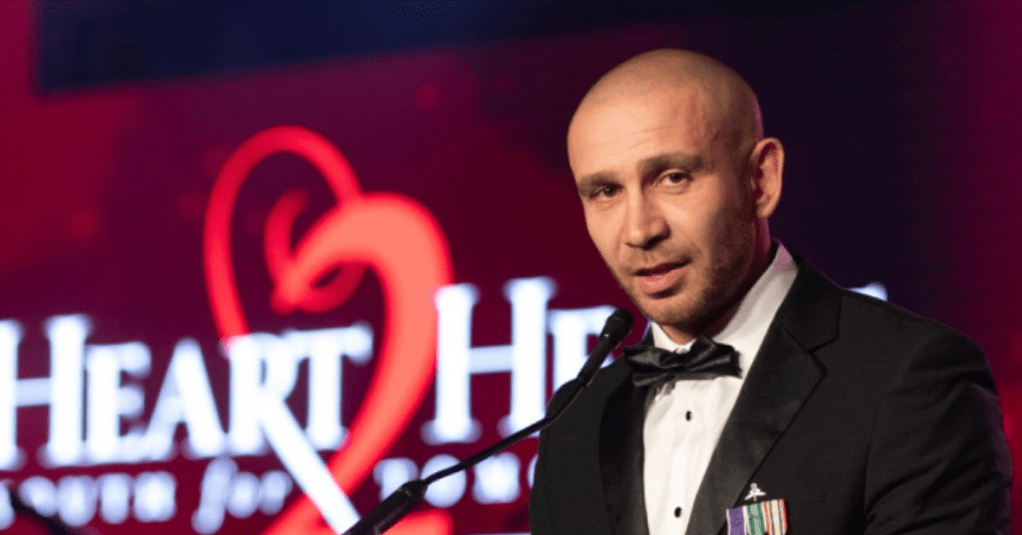

After spending his childhood in the Soviet Union, democracy and freedom became important values to Pasha Palanker. Those experiences shaped his entire life.
“My family came to the United States in ’96 when I was 15 years old as refugees. It was a big reason I wanted to serve,” he explained. “We had a bunch of people donate stuff to us that helped us get through that first initial stage when we were kind of lost. I didn’t speak a word of English when I came here, and I just felt so much gratitude to this nation that after I graduated high school, I wanted to give something back, and that’s why I enlisted in the Army.”
Palanker didn’t graduate until he was 20 years old due to some of his credits not transferring over from what is now Russia. Since he associated the military with the Army, that’s the recruiter he went to see. The scores he received on his ASVAB allowed him to do any job, and his fluency in Russian had him in high demand for military intelligence.

“He had to twist my arm and give me a big bonus to get me to sign on for Hawaii and not Los Angeles like I wanted,” he laughed.
It was 2003, and the war in Iraq was kicking off. By the end of 2004, Palanker was in combat.
“I was there as part of the counter-IED task force. I saw a lot of carnage that the normal brain is just not used to seeing,” Palanker shared. “During the 10 months of that, there were two incidents that would change my life.”
The first was when he was a gunner and spotted a suicide bomber. Though he could have chosen to duck down, Palanker describes an overwhelming anger that came over him—refusing to accept the bomb going off. He immediately put the man under fire and stopped him from being able to detonate when they passed, though it eventually went off when he and the other troops were safe. It was filmed and shown in an Al Qaeda propaganda video, which he has.

“I just found out because of it they upgraded an award I had to Bronze Star with Valor,” Palanker added.
Just two weeks before being scheduled to return home, he volunteered for a mission he didn’t have to go on. Palanker stepped on an IED and was thrown during the explosion but miraculously was all in one piece, though he was left with a severe concussion.
When he returned stateside, it was to the Special Forces selection and eventually qualification.
“I had it all. I was working for this incredible unit and being promoted left and right. It wasn’t until about 2012 that I started to notice something was off,” Palanker recalled. “I had multiple incidents of road rage and just uncontrollable anger. But I just kept ignoring it, and by 2014 and 2015, I was in Iraq dealing with ISIS.”
Though he thought he had repressed and handled everything, it all came flooding back the second the ramp opened on the plane.
“That deployment was rough. I just wasn’t okay, and then I ended up getting hurt and sent home early,” Palanker added.
A decade after his first deployment, he admitted he needed help.




“I was afraid of the stigma. I was afraid of being taken off deployment rotation, of losing my jump status, security clearance—all of that stuff. So I didn’t, and because of that, I didn’t get help when I needed it. I ended up hitting rock bottom before I finally realized I didn’t have a choice and needed support,” Palanker said.
A year later, he was in an intensive TBI and PTSD program at Walter Reed Medical Center. Though initially, the Army tried to med-board him due to his injuries, he fought it with command support and won. He was assigned to be a free-fall instructor and felt himself getting better day by day, with his wife and four children by his side.
In 2020, a jump almost ended his life, and though he had significant injuries, he healed but was forced to medically retire. His head injuries were causing issues; Palanker found his anger difficult to control once again and began having suicidal ideations often. (Editor’s note, if you or someone you love is struggling with mental health dial 988 for help. There is no shame in getting the assistance you deserve). His wife and children kept him from taking his life, and he checked himself into Walter Reed once again. Though their treatments helped, the feelings would come back and threaten to take over—until he started to run.
“I ran for eight hours and ended up doing 35 miles. I could barely move when I finished, but those thoughts were gone. Running became my lifeline,” Palanker shared.

He incorporated therapy, meditation, and other strategies into his day. Then Palanker felt called to share his story, experience, and healing journey on social media.
“I would wake up to 100 million views on different videos I had put out there. It was wild,” he said. “Once I stopped being a victim; instead of just seeing the problems, I started seeing solutions. Not all of them worked out, but I started to try different things, and that’s eventually how I found these things that help me get through the tough days.”
Palanker often speaks at military events across the country and with Headstrong. He’s on a mission to help other veterans find their path to healing. If he could tell veterans anything, he has two words: Keep going.
